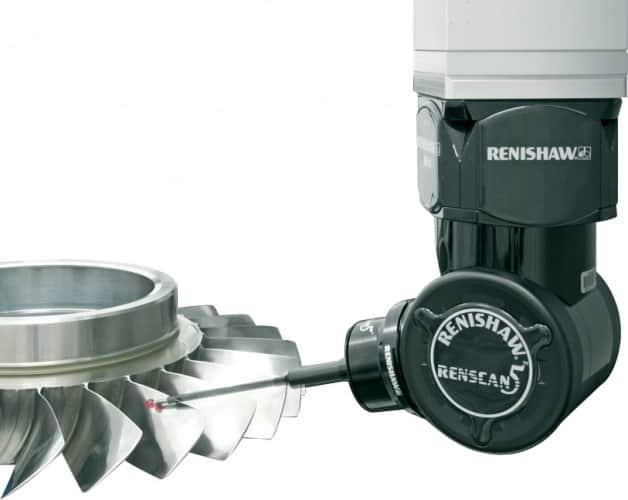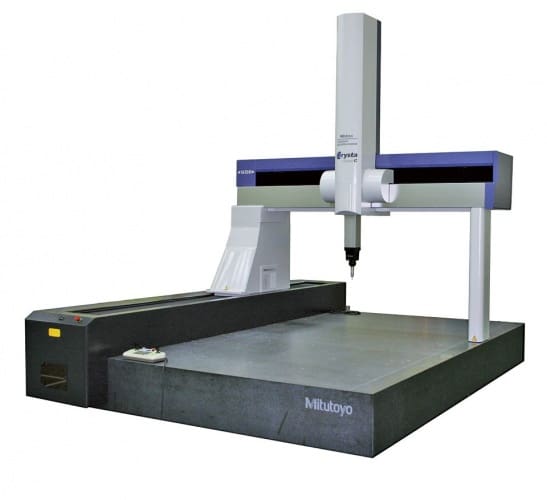However, these increased production levels can often put pressure on other areas of the manufacturing process and lead to bottlenecks in the inspection process.
To address this challenge, aerospace manufacturers are increasingly turning to advanced inspection techniques
One such manufacturer is Midlands jet engine manufacturer ITP Engines, which recently invested in a high-speed, high-accuracy measurement system for its blisk and IBRS (aero-engine components consisting of a rotor disk and blades) production line.
Based in Lincoln, the firm, descended from Power Jets, the firm, founded by the father of the jet engine Frank Whittle, turned to measurement specialist Mitutoyo to provide a system that could keep pace with its demanding production volumes.
The resulting solution is based on one of Mitutoyo’s advanced Crysta-Apex C Coordinate Measuring Machines. Built using lightweight materials and boasting a moving-bridge type machine structure,
the system is claimed to provide excellent motion stability and high accuracy.

Rather than using a conventional probing system, the CMM was supplied fitted with a Renishaw REVO, five-axis measuring head that is able to perform continuous surface scanning to deliver full 3D geometry in a single scan.
According to Mitutoyo, this measuring head is able to overcome the limitations of three-axis scanning methods.
The system uses synchronised head and machine motion when scanning, rapidly following changes in part geometry without introducing dynamic errors. It can also move at a constant velocity while measurements are being taken, without impacting accuracy.

The speed and accuracy of the installation is further enhanced by the use of a specially designed rotary table that can be used to hold and manoeuvre the blisks and IBRs.
Explaining how ITP settled on the system Rafael Castro, ITP advanced manufacturing facility factory manager, said: “In addition to other metrology technologies we considered non-contact optical systems, although the physical nature of our blisks and IBRs, and the potential for reflections from the materials we use, meant that this technology was not suitable for our needs.”
Castro added: “Customer requirements demand that all airfoils on all Blisk and IBR components are measured. An average part has about 60 airfoils and each airfoil needs to be measured in at least six sections, each one with around 200 points. With a future production greater than 1,000 blisks and IBRs a year, optimisation of our inspection process was vital.
“The Revo scanning head on our Mitutoyo CMM features continuous surface scanning, capturing full 3D geometry in a single scan, which is a major improvement when compared to the traditional technology of intermittent single-point touches. In addition, the use of a high-precision rotary table allows us to use a smaller and more precise Mitutoyo CMM.
“As the increased amount of points we are now scanning had the potential to make post processing more time consuming, a software tool was developed by the ITP UK´s controls team in Whetstone to reduce data analysis time.
“Now fully operational, our new method is up to six times faster than our previously used conventional system. In addition, our Mitutoyo CMM system has further enhanced our already impressive accuracy capability.”




Glasgow trial explores AR cues for autonomous road safety
They've ploughed into a few vulnerable road users in the past. Making that less likely will make it spectacularly easy to stop the traffic for...